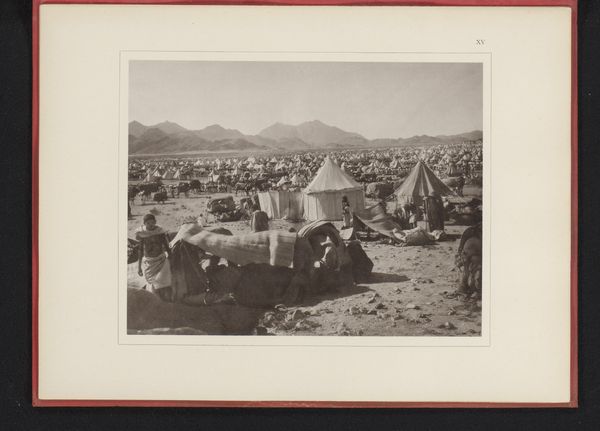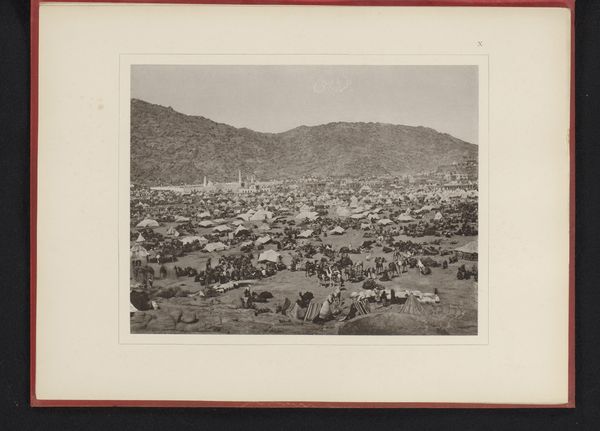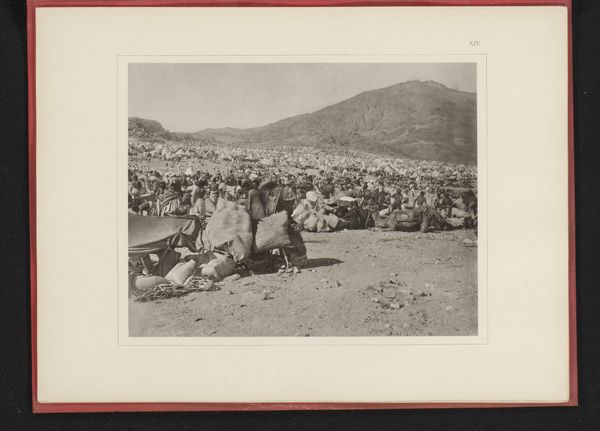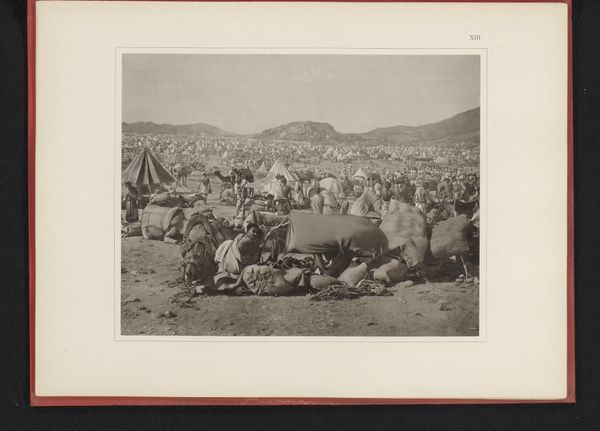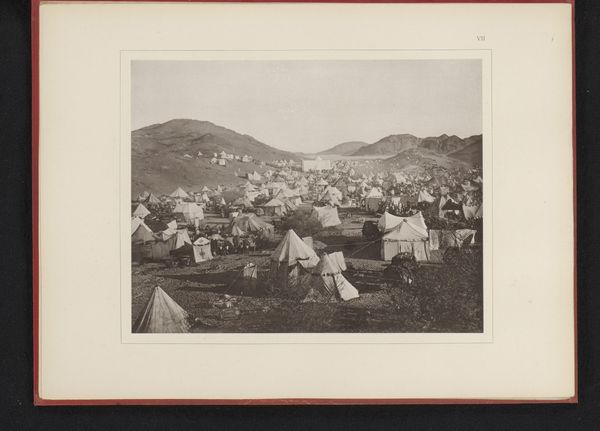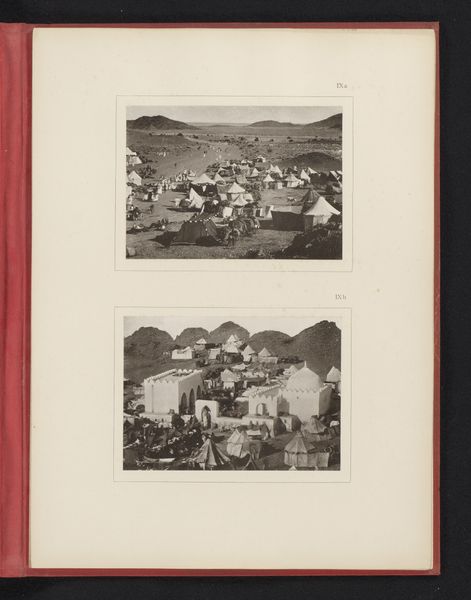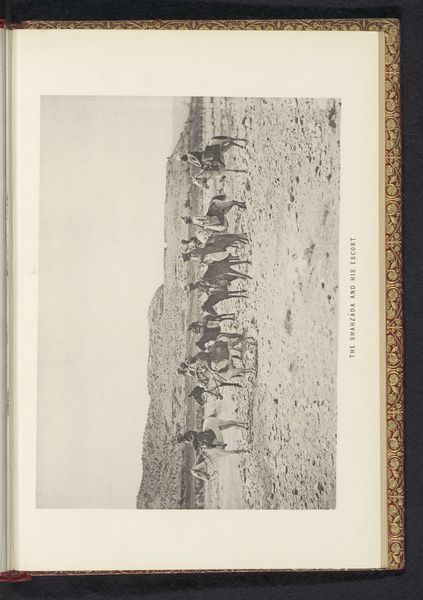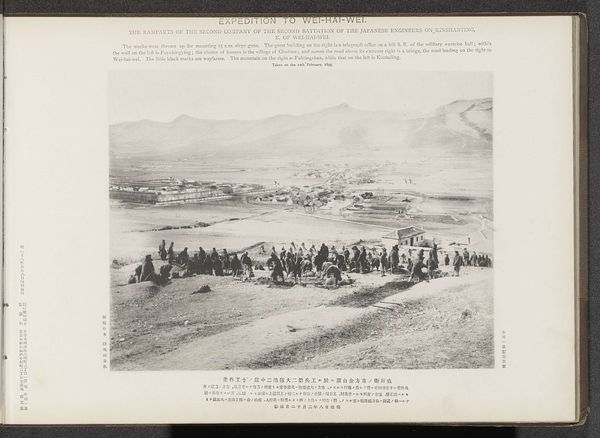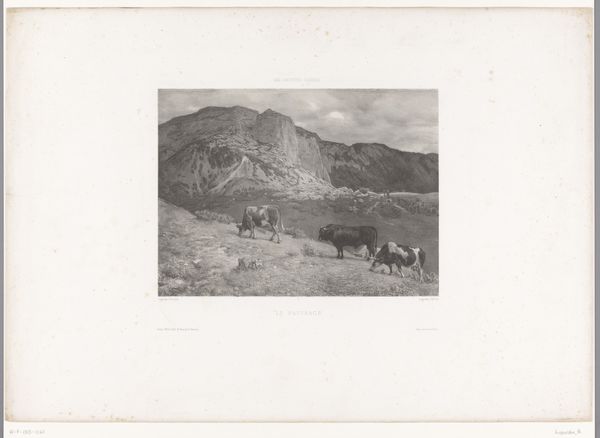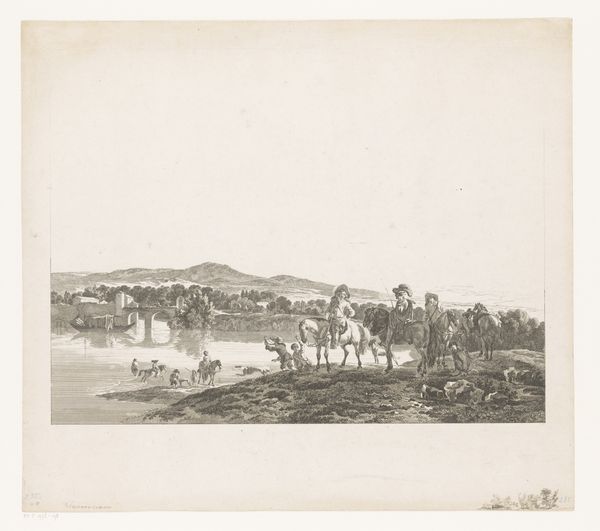
Pelgrimskamp bij het graf van Mohammeds echtgenote Maymunah bij Mekka tijdens de Hadj 1889
0:00
0:00
print, photography, gelatin-silver-print
#
print photography
# print
#
landscape
#
photography
#
orientalism
#
gelatin-silver-print
#
islamic-art
#
history-painting
#
realism
Dimensions: height 270 mm, width 360 mm
Copyright: Rijks Museum: Open Domain
Editor: This is "Pilgrim Camp near the Tomb of Maymunah, Wife of Muhammad, near Mecca during the Hajj," a gelatin silver print by Abd al-Ghaffar from 1889. It's such a sprawling scene; it almost feels like I'm looking at a city made of tents! What stories do you think are embedded in this photograph? Curator: What I see here is not merely a landscape, but a complex document laden with socio-political implications. This image, framed through the lens of Orientalism, presents a specific, possibly romanticized or exoticized, view of the Hajj. How does seeing it as a "city of tents" affect your understanding of its historical context? Consider the power dynamics inherent in how Western audiences consumed images of the East during this period. Editor: I hadn’t thought of it that way. It feels less like a neutral observation now, and more like… well, almost a construction. Was the photographer, Abd al-Ghaffar, also implicated in this Orientalist view, even from within the culture? Curator: That’s a critical question. Think about the photographer's position. Was he empowered or constrained by the prevailing Western gaze? Were there pressures to conform to certain expectations in representing his own culture? Photography at this time often served colonial interests, shaping perceptions and reinforcing power imbalances. How might we reframe this image to resist those dominant narratives and emphasize the agency and lived experiences of the pilgrims themselves? Editor: So, instead of just seeing tents and people, we should be asking who gets to tell this story and what biases are at play? It sounds like understanding this photograph means digging into a lot more than just what’s on the surface. Curator: Precisely. Examining images like these allows us to unpack the complex interplay between representation, power, and identity. It is not enough to simply appreciate the aesthetic quality, we have a responsibility to interrogate the underlying socio-political context that shapes its very creation and reception. Editor: I definitely have a different perspective on this now. Thank you for widening my view on it!
Comments
No comments
Be the first to comment and join the conversation on the ultimate creative platform.
